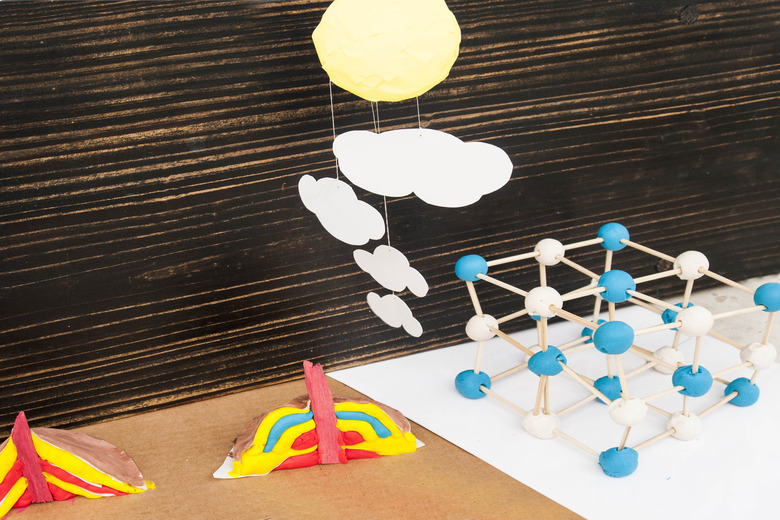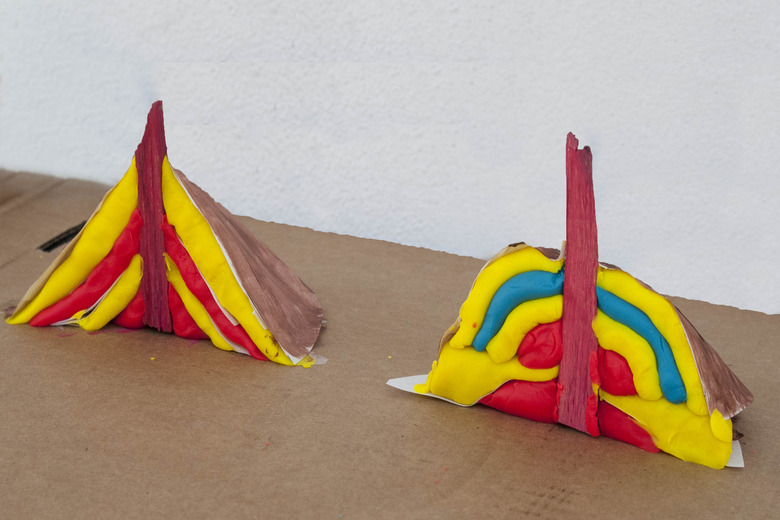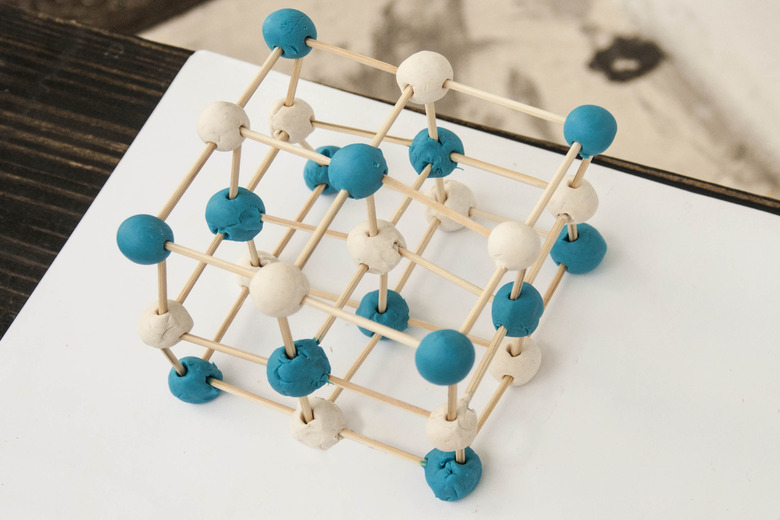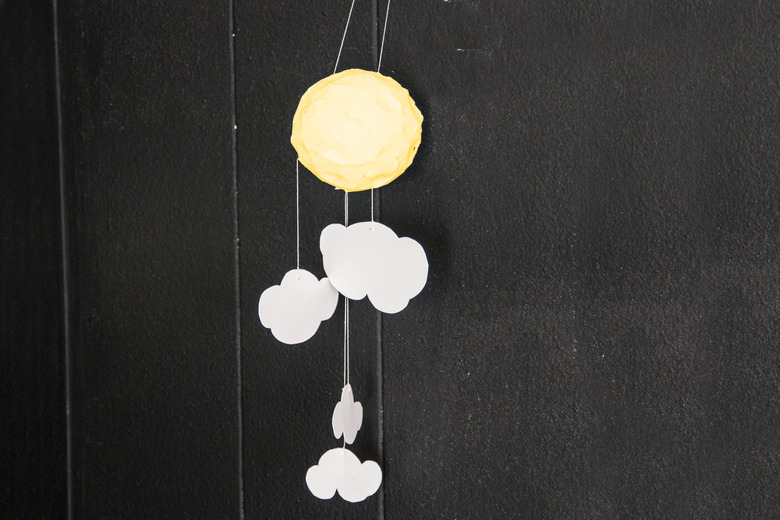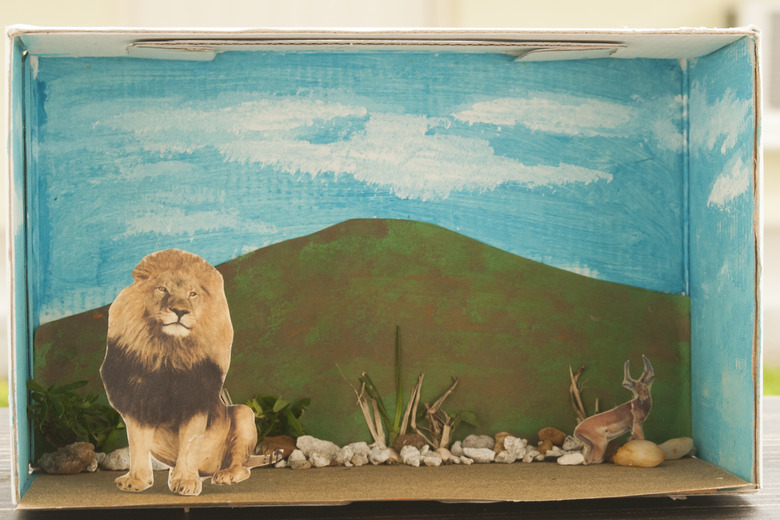Ideas For School Science Models
Whether you're setting up for a school fair, assigning a project or working on an activity in class, science models should go beyond the standard foam-ball solar system. From earth science explorations to bridging the biological sciences, you can help your students to brainstorm, create and construct magical models that display the concepts they are currently learning about.
Earth Science
Earth Science
Explore the earth sciences with a comparison volcano model. There isn't just one kind of model, and there isn't only one type of volcano. Have the students make at least two different types of volcanoes — such as a composite cone and a shield — next to each other on the same cardboard base. Use clay or layers of papier-mache to make the volcanoes. Cut through each one to make a cross-section that the children can label. Another option is to design a plate tectonic globe model. The students can draw a map of the world, adding in the tectonic plate lines, and then glue it to a soccer ball-sized piece of polystyrene foam. Have the students draw the maps in tapered strips so that they will fit on the rounded sphere without bunching. Give it a 3-D look by covering the drawing with clay. Use blue for the oceans and green and brown for the land, etching out grooves for the plate lines.
Chemistry Connections
Chemistry Connections
Take the equations, concoctions and elements that the students are learning about into the 3-D world with a chemistry model. Help your students get creative and go beyond the typical chemical compound model. They can use straws and foam balls to make a model that displays the structure of an atom or molecular compound. Focus especially on the elements and compounds being studied in class. For example, if you're making a salt — NaCl — molecule model, coat foam balls in real course salt that the students color with paint or food dye.
Weather Models
Weather Models
Your students could make a sun and cloud mobile, or they could get more creative and come up with a standout science project that focuses on the atmosphere and weather. For example, make a tornado bottle model. Students as young as preschool can make simple tornado models with two-liter plastic bottles. Take two bottles and partially fill one with water. Place a piece of duct tape over the top of both bottles and poke a pencil-sized hole in each one. Place the empty bottle on the filled one — mouth to mouth — and tape them together. Flip the bottles over to create a water funnel. Another option is to make a wind model. Insert a piece of polystyrene foam onto the top of a pencil or wooden dowel. Push four craft sticks through the sides of the foam to make a plus sign. Press four smaller foam balls onto the craft sticks. Secure the model on a cardboard base with a mound of modeling clay. Place an electric fan near the model to move the craft stick blades and demonstrate how wind can create energy through motion.
Biology Illustrated
Biology Illustrated
Create complex models of the Earth's different habitats to show the biological diversity of nature. Use a large, empty box to house the model. Cut off one side to make a diorama stage that everyone can see into. Use real plants — such as moss for the rain forest — to create a floor and background. Design clay animals or make pop-up animals from card stock paper and paint. Divide the students into groups, and assign a different environment to each one or create two teams, with one aquatic and one terrestrial group. Use a clear plastic food storage container to make an aquatic ecological environment model that holds water, plant life and plastic toy sea creatures.
Cite This Article
MLA
Loop, Erica. "Ideas For School Science Models" sciencing.com, https://www.sciencing.com/ideas-for-school-science-models-12743670/. 15 April 2010.
APA
Loop, Erica. (2010, April 15). Ideas For School Science Models. sciencing.com. Retrieved from https://www.sciencing.com/ideas-for-school-science-models-12743670/
Chicago
Loop, Erica. Ideas For School Science Models last modified August 30, 2022. https://www.sciencing.com/ideas-for-school-science-models-12743670/
